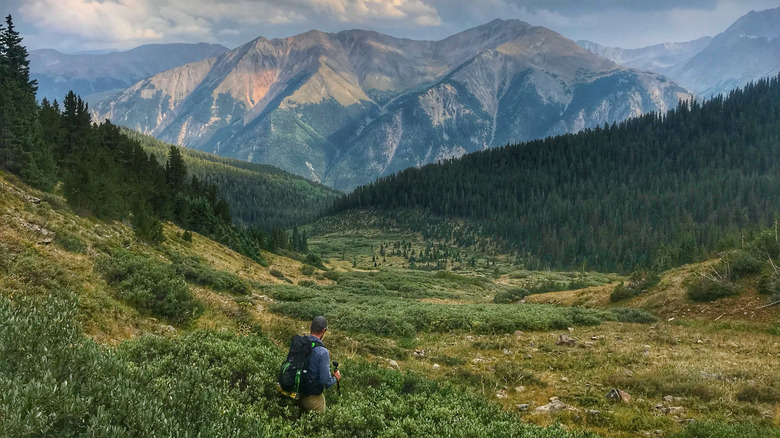Colorado's Highest Mountain Promises Breathtaking Views And Endless Adventure
Colorado is a truly distinctive state, offering a blend of urban and cultural cities where tech businesses flourish alongside rugged natural landscapes renowned for outdoor recreation. Nestled in the stunning Rocky Mountains, Colorado's dramatic scenery attracts adventure enthusiasts year-round. Rocky National Park is a hidden gem for outdoor adventures, and the state boasts world-class hiking and climbing opportunities, particularly on the 14ers, which are 58 peaks over 14,000 feet above sea level. Colorado's highest peak, Mount Elbert, rises up to 14,433 feet, offering stunning views for those who undertake this adventure. While some National Park trails are only for experienced hikers, Mount Elbert features gradual slopes that are accessible for most adventurers.
While relatively achievable, climbing Mount Elbert is still a challenge, and it is best to do a little research and planning beforehand. Alongside considerations for weather (sudden changes in conditions are common), one of the biggest problems hikers encounter are the physical and mental struggles attributed to high altitude. Elevations between 4,900 and 11,500 feet above sea level is categorized as a high altitude hike, and lower levels of oxygen in the atmosphere will greatly affect your body — although the severity of these reactions is different on a person-by-person basis. Taking time to acclimatize and carrying altitude sickness tablets can ensure a safer and more comfortable hike, allowing you to better able to enjoy the beautiful surrounding scenery.
South Mount Elbert Trail vs. North Mount Elbert Trail
As with most mountain hikes, choosing your route is an important first step toward a successful climb. When it comes to Mount Elbert, there are two main trails that lead to the summit: the South Trail and the North Trail, each offering epic vistas and a unique hiking experience.
The South Trail is a well-trodden path that is around 12 miles round-trip and has two possible starting locations: a lower trailhead near Lakeview Campground and one 1.8 miles further up the road. Limited parking is available, and spaces fill up quickly, so it's worth arriving as early as possible and familiarizing yourself with alternative locations if you're traveling by car. Known for its scenic beauty, the route crosses through meadows and boasts picturesque views of the Twin Lakes and Forebay Reservoir from above.
The North Trail is a class one trail that is about 9.3 miles round trip. It is often referred to as the main trail for summiting Mount Elbert and is located outside of Leadville, off Halfmoon Road. The trailhead is situated near Elbert Creek Campground (a great spot to help you acclimate to the altitude), where you will find restrooms available for use prior to your hike. This route is straightforward but strenuous, and climbers will have to face an elevation gain of over 4,000 feet.
Tips for summiting Mount Elbert
The best conditions to climb are between June and September, when weather conditions are more favorable; however, this also means trails are at their busiest. If you're looking to stay nearby, Leadville is your best bet. Staying in Leadville will also allow you to get used to the higher altitude, as the town is about 10,200 feet above sea level.
Being prepared for a day out on the mountain is essential. There is no potable water on the trails, so it's advised to bring plenty of water to avoid dehydration. Dogs are allowed on the trails — especially if you have an energetic pup — however; they must be kept on a leash, and you should pack enough water and treats. Navigation apps like GAIA or AllTrails can assist with route-finding. Letting someone know of your route and location before setting off for the day is a must, and be sure to follow these safety tips if you're attempting your first solo hike.
It can be unpredictable and windy as you approach the summit, so it's important to layer up your clothing, bring waterproof gear, and wear sturdy, ankle-supportive hiking boots. Hiking poles may be useful when attempting steeper sections along the trail. Checking the weather frequently will ensure you do not get caught in hamrful conditions, and familiarizing yourself with the U.S. Department of Agriculture's lightning safety tips is also worthwhile. While it's not unusual to face some symptoms relating to altitude, like shortness of breath, if symptoms worsen, be sure to descend as soon as possible. The altitude also increases your risk to UV exposure, so bringing sun protection like sunscreen and sunglasses is crucial.


